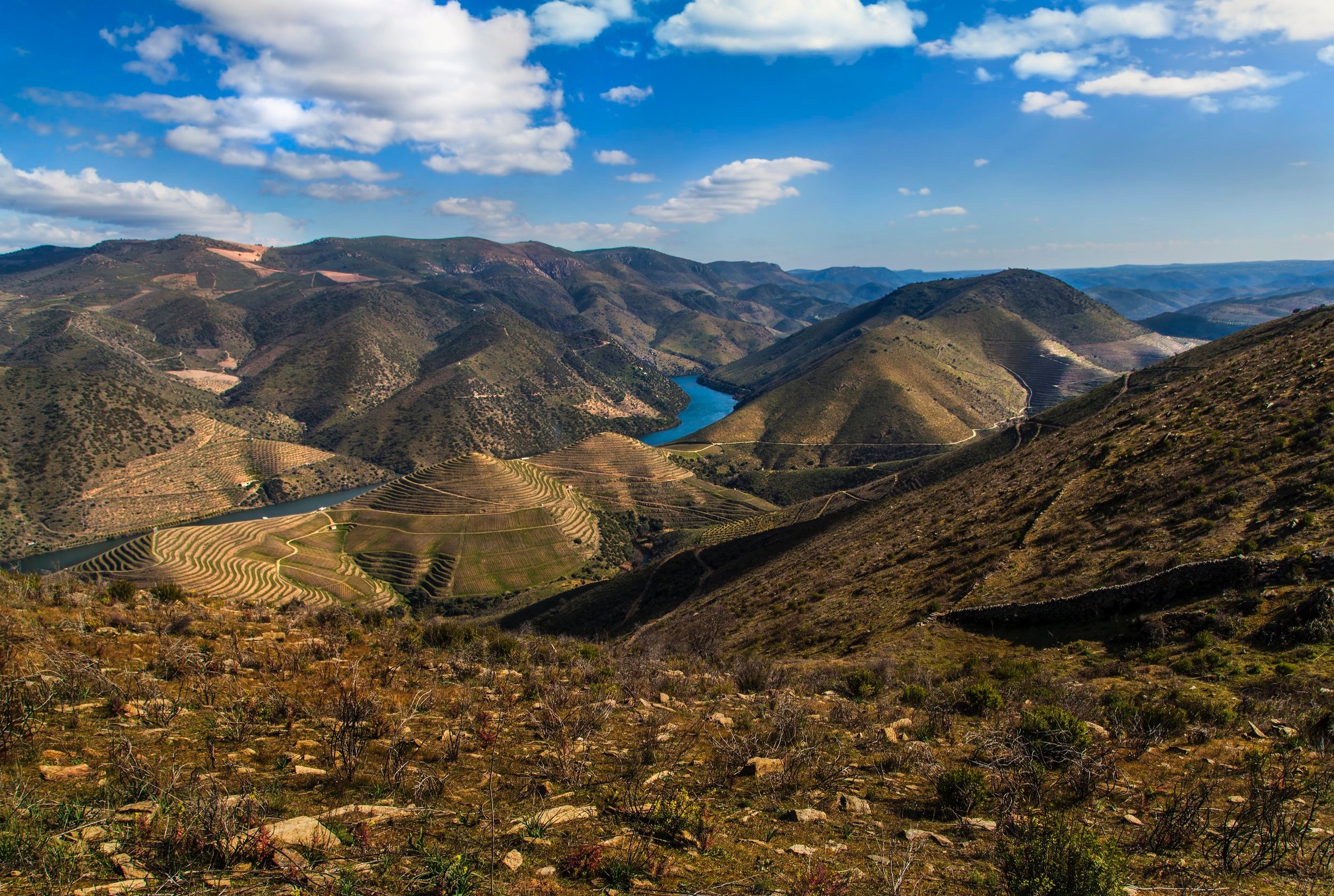Portugal's Vale do Côa Archaeological Park
From Port to Palaeolithic Art in the Côa Valley
When we think of Portugal, we think of Port. This isn’t surprising – after all, the Douro Valley makes up one of the world’s oldest and most beautiful wine regions, and has the distinction of having one of the world’s first recognised appellations, awarded just after those of Chianti, Tuscany and Tokaj, Hungary, in the 18th century.
While the undulating hills of the Douro Valley allure most travellers to Portugal, if you make your way a little further to the east along the Douro, you find a beautiful remote valley with a spectacular archaeological park, unknown to many and visited by few.
Dr Jeni Ryde, who leads our Portugal tour this October, takes us to this World-Heritage listed Archaeological Park in the Côa Valley and explains how a multi-million Euro dam project was halted to preserve rock art…
Exploring the ‘Parque Arqueolgico do Vale do Coa’ (Archaeological Park of the Coa Valley), Portugal.
The Prehistoric Rock-Art Site of the Côa Valley
This valley of the Côa River, a tributary of the upper Douro river close to the Spanish border, is a major area of prehistoric art. Here a vast art gallery stretching for more than 17 kilometres contains thousands of rock engravings of animals and human figures from the Upper Paleolithic Age to the Iron Age, dating from about 22,000 BCE.
What makes the Côa Valley site unique is that, in contrast to the majority of paintings and engravings from the European Ice Age that are found in caves, these images were created on rock faces in the open air, an extremely rare phenomenon, making this area the largest open-air site of Palaeolithic art in the world.
How was it discovered?
The Portuguese electricity company, EPD, had been turning its attention to the Douro’s tributaries and work had began on a 100-metre-high dam in a gorge at the confluence of the Côa and Douro rivers.
Four years and more than €200 million later, the project was abandoned. Why? An environmental impact study that included an archaeological survey of the area prior to the construction of the proposed hydroelectric dam that would have entirely submerged the site revealed the presence of ancient engravings. It became apparent that there were tens of thousands of them and that the Côa Valley was one of the world’s most important Palaeolithic sites.
World interest and anti-dam campaigns mounted by local citizens and the international scientific community forced the government to suspend the dam. UNESCO also moved quickly, declaring the Côa Valley a World Heritage Site of great cultural significance in 1998. This in turn brought EU funding for the newly formed Foz Côa Archaeological Park that now includes an outstanding award-winning museum; state-of-the-art in its design and in its use of technology.
Vila Nova de Foz Coa, Portugal - March 9, 2019: The building was designed by the architects Tiago Pimentel and Camilo Rebelo. Opened in 2010, it overlooks the mouth of the river Côa along with the river Douro.
Vila Nova de Foz Coa, Portugal -June 9, 2016: Exhibition at the Museum of Art and Archaeology in the Prehistoric Rock-Art Site of the Coa Valley.
Engravings to be found
An impressive 23 archaeological sites have been found along the valley, containing an array of engravings chiseled into the hard-vertical surfaces of schist rock using only simple flint or quartz tools.
The earliest images on these stone canvases are mostly of animals, especially mountain goats, horses, aurochs (wild cattle) and deer. The first three are the most common and are characteristic of the earliest phases of art in western Europe. Some rare engravings of fish as well as other species and non-figurative signs and marks have also been found.
All attest to the social, economic and spiritual life of the earliest modern humans living in this area as well as to a vitality and mastery of drawing.
Petroglyphs from Paleolithic period, Coa Valley, Portugal.
Why here?
The Côa River meanders across fertile plains and rocky slopes, tracing its path towards Douro. Although the upper reaches of the Côa are characterized by a hilly, rocky and deep valley, which is hostile to settlement, the southern territory has wide, flat, fertile areas, beneficial for agriculture and herding. It is therefore plausible that the natural conditions of this region were perfect for these nomadic prehistoric peoples to form stable communities.
Access to the valley floor where most of the engravings are found is by appointment and can only be reached with a guide and in 4WD vehicles. Not only does this off-road transport allow small groups to reach the valley itself to see the art but it also gives participants an outstanding view of the Douro port wine terraces and their cultivation making the entire experience a unique combination of art and nature.
A view across the vineyards and hills of the Douro Valley, Portugal.
Tour Portugal in 2023
Our Portugal tour this October takes us to the Côa Valley Archaeological Park to view the best of the 5000 or so examples of rock art and engravings, before enjoying lunch at the outstanding museum. Leaving the roads behind, we then pack our bags and embark on a full day private cruise downstream along the Douro to Porto, enjoying lunch and a Port tasting on board while admiring terraced vineyards, woodlands and grand quintas.






